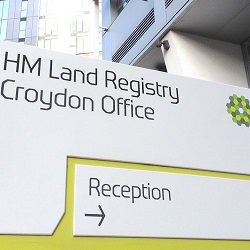
Land Registry: 59% of customers very satisfied with service
HM Land Registry (HMLR) has missed the targets it set itself for reducing errors in new entries on the register and on productivity, according to its annual report.
However, it hit other targets, while a third of local authorities have now moved their data on to its local land charges register.
HMLR said reducing the frequency and impact of errors for new entries on the register was “essential” for ensuring the accuracy and reliability.
“By minimising these errors for new entries on the register, we ensure that property transactions are processed smoothly and efficiently, reducing the risk of delays and disputes.”
In its annual report for the year to 31 March 2025, HMLR said it only reduced the frequency and impact of errors by 2%, against the target of 5%.
No comparison with previous years can be made because this is the first time HMLR has collected the data.
HMLR described the result as “encouraging progress” which established a “foundation for continued improvement”.
On productivity, each caseworker had completed 10.96 applications per full-time equivalent day to change the register (excluding applications which were automated); the target was 12.2 and had been 11.65 in the previous year.
HMLR said: “Although we completed approximately 3% more applications, when weighted by complexity, compared to the previous year and 6% more than we received, our productivity per caseworker temporarily decreased.
“This was due to the successful recruitment of nearly 200 new caseworkers, who needed time to develop their expertise; our successful targeting of the oldest and most complex outstanding applications, which take longer to complete; and our focus on enhancing the skills and expertise of our existing caseworkers.
“These factors have an impact on short-term productivity but contribute to greater resilience in the future.”
On customer satisfaction, HMLR said 59% of customers gave its overall service a score of 8-10 in 2024-25, up from 56% the year before and only just shy on the target of 60%.
Meanwhile, by the end of 2025, HMLR was holding 636,000 outstanding post-completion applications to change the register, some way off its target of 572,000.
It said this was because of the decision during the year to prioritise reducing the number of older, more complex applications at the cost of increasing the wait to process “younger and simpler applications, which we receive in very large volumes”.
HMLR achieved its target of delivering 99% of pre-completion guaranteed information service requests to customers within three working days, recording a figure of 99.8%, and 95% of post-completion expedited register change applications within 10 working days, which it had narrowly missed last year.
Elsewhere in the annual report, HMLR said that by the end of March, 110 local authorities – out of a total of 331 – had successfully transferred more than 7.2m local land charges to its digital local land charges register.
“The time taken to receive search results in migrated areas has reduced from days or weeks to instant availability online.”
HMLR also said its counter fraud group prevented more than £59m of fraudulent property applications in 2024-25.
Simon Hayes, chief executive and chief land registrar, said HMLR’s focus on improving the speed of registration had yielded “tangible results” in 2024-25.
“However, we remain committed to further improving the service we provide to our customers and the industry, both by harnessing technology and through the dedication of our people.”















Leave a Comment